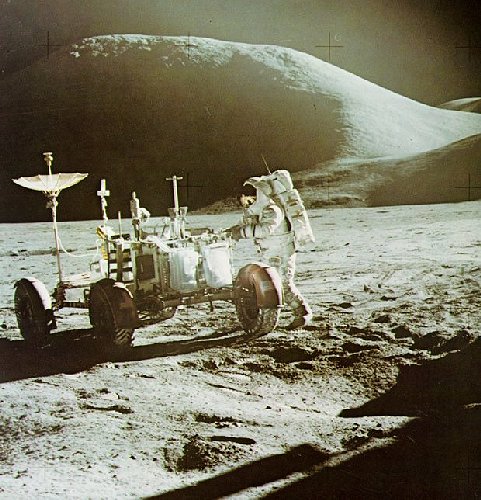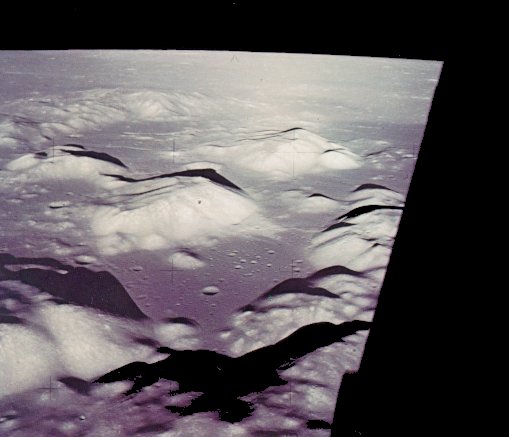















|

|
|
Vistas without parallel in human experience surrounded
the crews on the great voyages of exploration.
Mount Hadley, rising 2 3/4 miles above the plain,
is Apollo 15's backdrop as Jim Irwin sets up the first
Lunar Roving Vehicle on the Moon.
(Photo captions for this chapter by the author.) |

|
| Comparable to the Grand Canyon in scale and grandeur, the Valley of Taurus-Littrow extends some 20 miles through the ring of massifs surrounding the plains of the Serenitatis basin. In this westward-looking view from Apollo 17 LM Challenger, CSM America is the small central speck below and ahead, approaching the neck of the valley between the 1 1/2 mile high massifs. |


